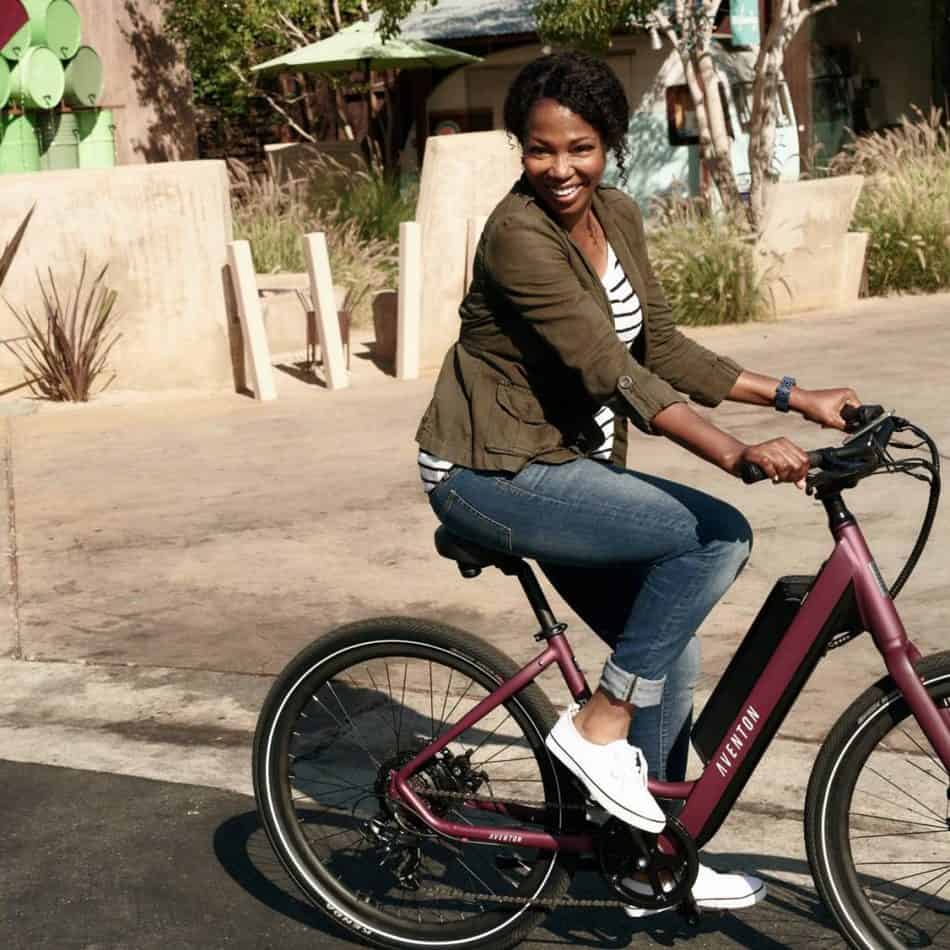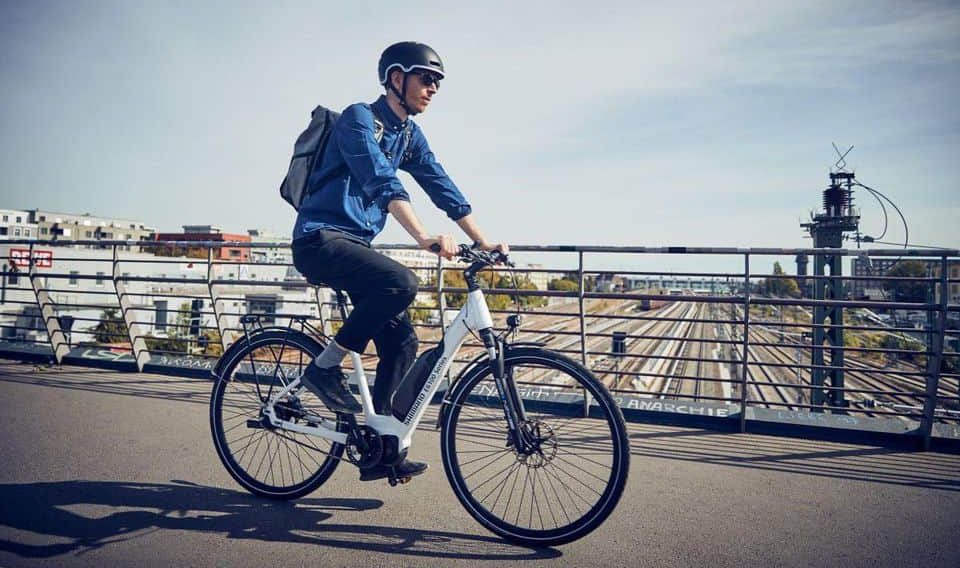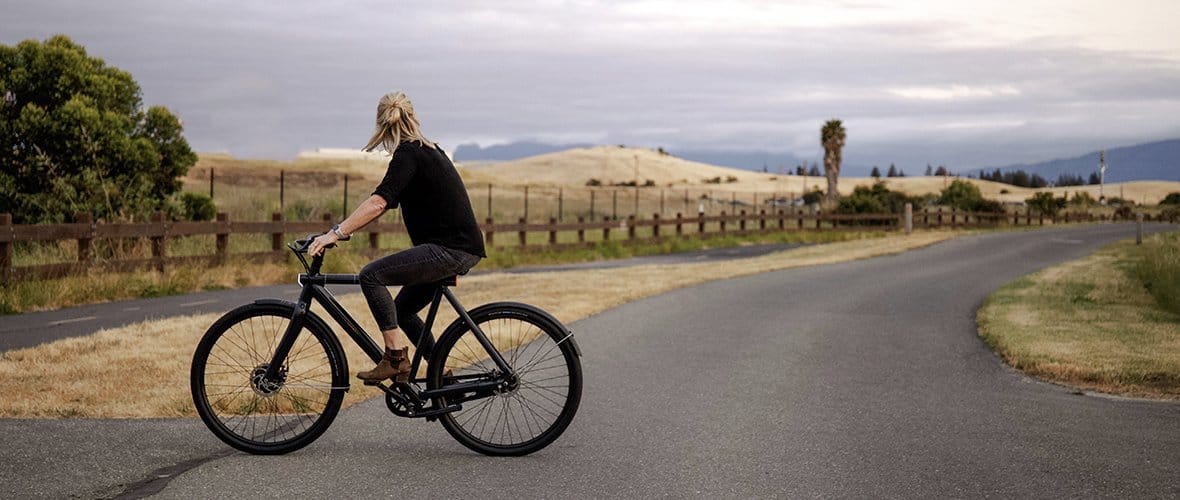Last Updated on July 19, 2023 by Igor Karni

If you are an e-Bike rider who is living in or traveling to the United States, you may be wondering what the e-Bike laws look like over there.
From speed limits to maximum motor outputs and more, this article will address all the necessary details — including rules and regulations — that riders should know before they start e-Cycling in the U.S.
Are electric bikes legal in the U.S.?
The short answer is, yes! Electric bikes, or e-Bikes, are legal in the United States. The long answer, however, is that each state and region is subject to its own set of rules and regulations, which includes speed limit, maximum power output, what classifications of e-Bikes are allowed, road laws, age limit, and more.
To begin, however, here are some of the Federal rules that surround electric bikes in the U.S:
- The Consumer Product Safety Commission (CSPC) defines a low-speed electric bicycle as a two or three-wheeled vehicle that includes fully operable pedals, a top speed that when powered solely by the motor is under 20 mph (32 km/h), and an electric motor that produces less than 750W. However, when it comes to the rules for e-Bikes on public roads, sidewalks, and pathways, these are classified under state jurisdictions and thus may vary across the board;
- The CPSC also states that low-speed electric bicycles that meet the above requirements are exempt from being classified as motor vehicles;
- E-Bikes that exceed these power and speed limits are regulated by the federal Department of Transportation (DOT) and National Highway Traffic Safety Administration (NHTSA) as motor vehicles, and thus are subject to meeting additional safety and road requirements;
- Though the Federal law governs the consumer product regulations for low-speed electric bicycles, the regulations of how these vehicles are used on public streets are subject to state vehicle codes and rules.
Essentially, this means that though there are rules surrounding what differentiates an e-Bike from a motorized vehicle (eg. the maximum power output of 750W and speed limit of 20 MPH), the federal laws do not dictate how each state and region’s laws govern the use of e-Bikes and how they are classified for public usage. For instance, some states have different speed limits and maximum power outputs.
Therefore, e-cyclists in the U.S. should be aware of their state’s rules before riding.
Read also: Best specialized electric bicycle insurance companies in the USA. And, Best e-bike financing options in the USA.
Difference in rules and regulations between pedal assist and throttle e-bikes
Many states in the U.S. abide by a three-tiered class system when it comes to e-Bikes, separating them into Class I, Class II, and Class III.
Class I e-Bikes, which are also known as pedelecs or pedal-assists, are limited to a top speed of 20 mph, with the electric motor only working when the rider is pedaling. Typically, Class I e-Bikes in the U.S. can be ridden on traditional bike paths, lanes, and anywhere else that a traditional bicycle is allowed.
Some pedelecs have a throttle included, which offers an extra power boost but are still only engaged when the rider is pedaling. This means that pedelec e-Bikes, even those with a throttle, cannot be ridden without human power.
Class II e-Bikes, which are also known as throttle e-Bikes, are similarly limited to a top speed of 20 mph. However, these e-Bikes include throttles that can propel the vehicle without the rider needing to pedal. That said, riders can still pedal alongside the throttle. In the U.S., Class II e-Bikes are allowed and can also typically be used on the same paths that traditional bicyclists can use.

Since federal law states that the top speed for a low-speed electric bicycle allows sole motor power of up to 20 mph, this means that Class II e-Bikes fit under the regulations of what is classified as a legal e-Bike.
Throttle can also be present on Class III e-Bikes, also known as speed e-Bikes, which will be discussed in the next section.
It is also important for riders to keep in mind that the maximum power output allowed on an e-Bike varies from state to state. These differences will be discussed later in the article.
Difference in rules and regulations between traditional and speed e-bikes
Class III e-Bikes, which are also known as speed e-Bikes, are electric bicycles that can go up to top speeds of 28 mph. Similar to Class I, Class III e-Bikes can either come with or without a throttle.
Read also: What is the difference between a regular e-bike and a speed e-bike? And, is it legal to derestrict electric bicycle speed?
When it comes to speed e-Bikes, the road rules are where they differ most from traditional e-Bikes (eg. Class I and II). Since Class III e-Bikes have been deemed as too fast for off-road bike paths, speed e-Bikes are only allowed on road lanes or on-road bike lanes (also known as curb-to-curb infrastructure). However, they cannot be taken on bike paths that exist outside of the road, or on trails that are shared with pedestrians.
Before purchasing or using a Class III e-Bike, riders should also be sure to check whether speed e-Bikes are legal in their state and what the e-Bike speed limits are, as these rules can vary greatly. For instance, in California and Tennessee, Class III e-Bikes are banned. In New York, only Class I are considered electric bicycles, and anything else is considered a motorized scooter.
In various other states, throttles on Class III e-Bikes are allowed so long as they only go up to 20 mph on motor power alone, whereas pedal-assisted electric power can continue up to 28 mph. As well, be sure to check that your motor wattage does not exceed your state’s legal limit, as speed e-Bikes tend to be equipped with more powerful motors (eg. 750W-1000W).
Lastly, be aware that in other states, 20 mph is the maximum limit, and in this case, a rider will not benefit from the higher speeds of a Class III e-Bikes.
Ultimately, it is up to your state’s laws to determine whether you can ride a Class III e-Bike or not, so keep in mind that speed e-Bikes may or may not exceed your state’s speed and motor limit.
Difference in rules and regulations between traditional (human powered) and electric bikes
For most states, electric bicycles are classed as “Bicycles” under Vehicle Type and thus follow similar rules and regulations to traditional (human-powered) bicycles.

However, in states such as Alabama, Alaska, Kentucky, North Dakota, Missouri, Nebraska, New Jersey, South Dakota, Vermont, Wisconsin, and Wyoming, e-Bikes are classified as motorized vehicles (eg. motorcycle, motor-assisted bicycle, moped, motorbike), which means that road rules and laws applied to your e-bike differ from traditional bike laws.
Read also: Do you need a license to ride an e-bike? And, Do you need insurance to ride an e-bike?
Need for a license, registration, insurance
For most states, riders do not require a driver’s license, registration, or insurance for their e-Bike. However, in a handful of states, certain types of licenses are required. Here are the states that require a type of license to ride:
- Alabama and Alaska (M Class License)
- Connecticut, Hawaii, Kentucky, Louisiana, Massachusetts, Missouri, Nebraska, New Jersey, North Dakota, West Virginia, Wisconsin, and Wyoming (Driver’s License)
Difference by state
With 50 states in the U.S., each state has its own set of rules and regulations, some of which have already been referenced earlier in the article. Below, we have further grouped the different states under important categories like maximum speed limits, maximum power outputs, and minimum age requirements.
If you notice that your state isn’t present on any of these lists, be aware that some states have not yet specified a maximum power, speed, and/or minimum age limit. In this case, refer to federal guidelines and be sure to keep up to date with your state’s news on e-Bikes, as rules and regulations surrounding e-Bikes may change at any time.
Maximum Motor Power
Most states measure motor power by Watts (W).
- 1000W: Georgia, Kansas, Oregon, Oklahoma, Vermont, Virginia
- 750W: Arizona (less than 750W), Arkansas, California, Colorado, Delaware (less than 750W), Iowa (less than 750W), Idaho (less than 750W), Illinois, Maine, Michigan, Missouri, Nevada, New Hampshire, North Carolina, Ohio, Pennsylvania, South Carolina, Texas, Utah, Washington, Wisconsin, Wyoming
- 500W: Maryland, Montana
Some states measure motor power by Cylinder Capacity (cc).
- 50 cc: Alaska, Connecticut (less than 50cc), Kentucky, Louisiana, Massachusetts, Nebraska, New Jersey, West Virginia
- 150 cc: Alabama
Some states measure motor power by Horsepower (hp).
- 2 hp: Hawaii

Maximum Legal Speed Limit (miles per hour)
Maximum speed is determined by the speed of the e-Bike when powered solely by its motor.
- 20 mph: Arizona, Arkansas (28 for Class III), California (28 for Class III), Colorado, Delaware, District of Columbia, Florida, Georgia, Illinois, Iowa (under 20), Maine (28 for Class III), Maryland, Michigan (28 for Class III), Minnesota, Nevada, New Hampshire, North Carolina, Ohio, Oregon, Pennsylvania, South Carolina, Tennessee (28 for Class III), Texas, Utah, Vermont, Wisconsin, Wyoming (28 for Class III)
- 25 mph: Indiana, Louisiana, Massachusetts, New Jersey, Rhode Island, Virginia
- 30 mph: Connecticut, Hawaii, Idaho, Kentucky, Missouri, Montana, Nebraska, Oklahoma, West Virginia, New York
Minimum Age Requirement
- 14 years of age: Alabama, Alaska, Michigan, New Hampshire, North Dakota, Tennessee (for Class III), Utah (or, 8 years old if accompanied by parent/guardian), Virginia (or, any age if under supervision of someone who is at least 18 years old)
- 15 years of age: Connecticut, Georgia, Hawaii, Indiana, Louisiana, Minnesota, New Jersey
- 16 years of age: Arkansas (for Class III), District of Columbia, Florida, Idaho, Illinois, Kentucky, Maine (Class II and III), Massachusetts, Oklahoma, Oregon, Pennsylvania, Rhode Island, Vermont, Washington (Class III), West Virginia
Read also: What age to I need to be to ride an electric bike? And, Do I need a license to ride an electric bike?
Helmet Requirements
While helmets are not legally required in every state, it is advised that riders should always wear a helmet for safety purposes. In most states, a traditional bicycle helmet is suitable, but in Alabama, New Jersey, and West Virginia, a motorcycle helmet is required.
Where can you ride an e-bike in the USA? Types of roads and paths
As stated earlier, road laws and rules very much depend on the state you are riding your e-Bike in. For the most part, however, Class I and II e-Bikes are allowed to be ridden on any path that a traditional bicycle is ridden, unless otherwise stated by state laws.
For the states where Class III bikes are allowed, they are prohibited from being ridden on off-road paths.
Read also: Best e-bike financing options in the USA. And, Top trusted electric bike brands in the USA. And, Top specialized e-bike insurance companies in the USA.
A few words in conclusion
Though it may take a bit of time and research to determine the exact e-Bike laws your state has, ultimately once finding out the road rules, e-Bike classification, speed limit, motor output, and age minimum, you will be good to go!
Igor is a sustainable mobility and green energy advocate. His mission for Easy E-biking is to help make electric cycling simple, practical, and fun. Follow him on Facebook and LinkedIn.




